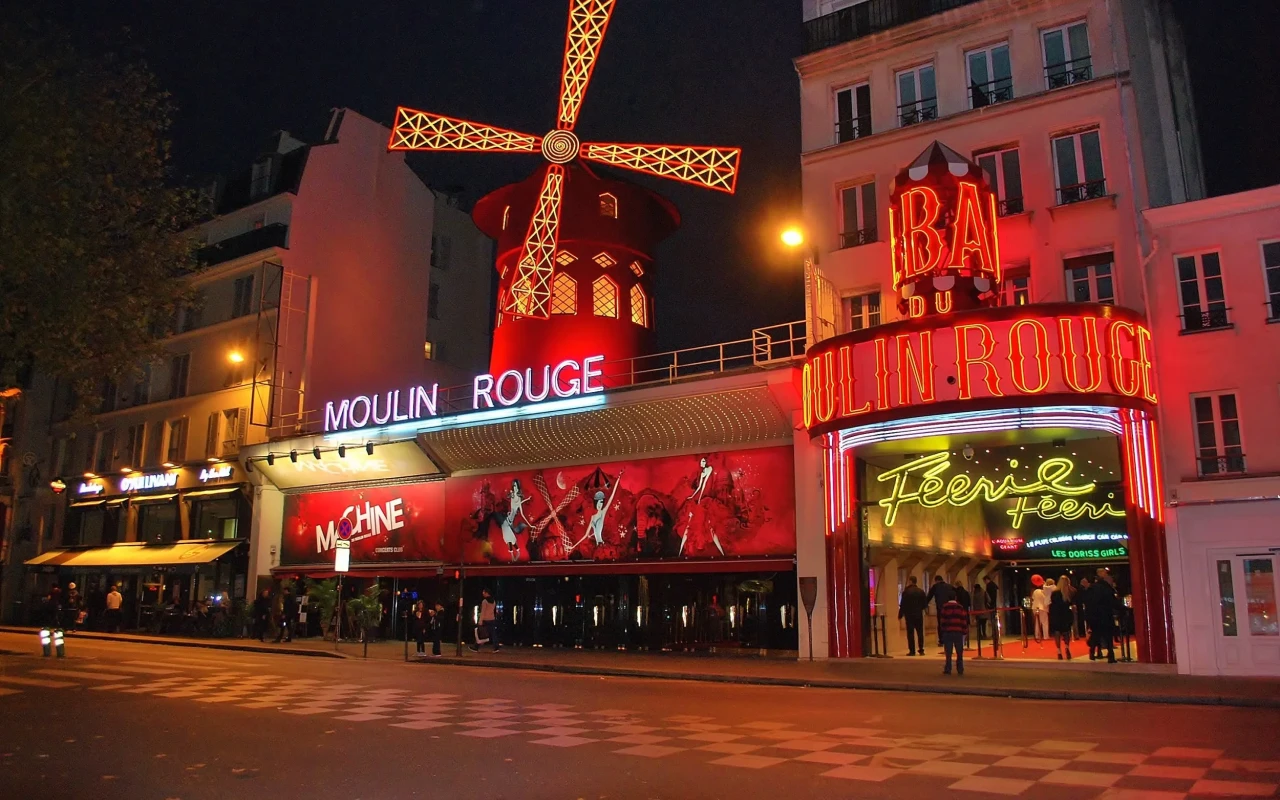Claim to Fame
The Moulin Rouge is the birthplace of the modern can-can dance and the world’s most iconic cabaret, known for its flamboyant performances, red windmill, and Belle Époque decadence.
📌 Navigating Moulin Rouge : Answers to Frequently Asked Questions
- Admission Fee: Admission fee required and varies by show type and seating arrangement; booking in advance is recommended.
- How Long to Visit: A show typically lasts around 90 to 120 minutes.
- Washrooms: Accessible toilets are available at the venue.
- Hours of Operation: Shows are typically offered twice nightly; check current schedule and availability online.
- Important Information: Arrive at least 30 minutes early to accommodate seating and pre-show activities.
- Handicap Accessible: The venue is accessible, but it's advisable to notify in advance for specific seating arrangements.
- Pets: Pets are not allowed in the theater.
- Guided Tours: Guided tours are available during the day, offering a behind-the-scenes look at the venue and its history.
- Restaurant or Cafe: Dinner is offered with some ticket options, featuring French gourmet cuisine.
- Gift Shop: The gift shop sells themed souvenirs, including show posters and branded merchandise.
- Parking: Limited on-street parking; it's advisable to use public transport with Blanche Metro station nearby.
- Family Friendly: The cabaret show content may be more suitable for adults; family-friendly performances are limited.
- Photography: Photography during performances is strictly prohibited, though photos can be taken before and after the show.
- WIFI: WIFI available in the lobby and lounge areas.
- Picnic Area: No picnic facilities; dining is strictly within the venue's restaurant as part of the show package.
Photos of Moulin Rouge
Located in the heart of Paris’s Montmartre district, the Moulin Rouge has been dazzling audiences since 1889. Its glittering stage, extravagant costumes, and iconic red windmill have come to symbolize Parisian nightlife. From its early days entertaining bohemian artists to today’s high-energy shows, the Moulin Rouge offers a dazzling mix of dance, drama, and spectacle.
What to Expect
Guests can expect a vibrant, choreographed revue show filled with feathers, sequins, and high kicks. The current production, Féerie, features over 60 performers, opulent set designs, and dramatic lighting effects. Expect tightly timed choreography, stunning acrobatics, and nods to traditional French cabaret.
You can choose from several show options, including a champagne-only ticket or a dinner-and-show experience featuring French cuisine served in the opulent dining room before the performance.
Background and Cultural Context
The Moulin Rouge was a beacon of Belle Époque Paris, frequented by artists like Toulouse-Lautrec, whose posters immortalized its dancers. It was a place where class boundaries blurred and creativity flourished. The can-can, once considered scandalous, became an international symbol of French flair and exuberance.
Though cabaret culture has changed, the Moulin Rouge retains its historical charm while embracing contemporary performance standards. It continues to inspire pop culture — appearing in films, fashion, and music videos across the world.
Best Time to Visit
Evening shows start around 9 PM and 11 PM, with dinner service beginning earlier for combo packages. Book tickets in advance — shows often sell out, especially during weekends and peak tourist seasons.
How to Get There
Take Metro Line 2 to Blanche station — the red windmill is visible immediately as you exit. The venue is located at the base of Montmartre, walking distance from Pigalle and Place de Clichy.
Photo Opportunities
- Classic shot of the illuminated red windmill at night
- Selfies at the entrance beneath the art-deco neon sign
- Charming café-lined Rue Lepic nearby for street scenes
- Montmartre staircase views for before/after-show ambiance
Travel Tips
- Dress smart-casual — no sneakers, shorts, or sportswear are allowed.
- Photography is not permitted during the show, but allowed outside and in the lobby.
- Arrive early if dining — doors open around 6:30 PM for dinner service.
- Combine your visit with a walk through Montmartre’s artistic streets.
FAQs
Is the Moulin Rouge suitable for children?
While the performance is tasteful and artistic, it is geared toward adults and includes some partial nudity — parental discretion is advised.
Is it a live performance or pre-recorded?
All performances are live, with professional dancers, singers, and occasionally acrobats and specialty acts.
Is dinner worth it?
Yes, for a complete experience — the food is upscale and French-focused, with wine or champagne included. However, the show alone is equally impressive.
Final Thoughts
Visiting the Moulin Rouge is more than a night out — it’s a step into Paris’s artistic and theatrical past. From its opulent ambiance to its mesmerizing revue, the experience is unforgettable. Whether you're drawn by history or seeking an evening of flair, the Moulin Rouge delivers pure Parisian magic.
